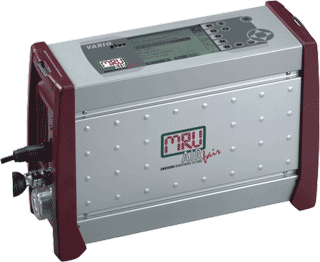The 5460 sequence integrated case is small but rugged, and dust & water resistant when closed. The 5460 Sequence Analyzers are complete with constructed-in sampling pump, circulate meter, automatic condensate removing, filters, PTFE liquid blocker, 12 ft. Also included are a cigarette lighter energy plug and remote printer actuator button for printer-geared up fashions. Carbon dioxide and water vapour are passed over a mattress of scorching char and are converted to CO and H2 which will be burned later as gasoline gases. Measuring the CO2 within the produced fuel or ‘syngas’ can assist evaluate gasifier operation. Prepared for the subsequent step? Please contact our Sales workforce for more info. Or to provide us with more information about your software, please complete our Utility Questionnaire and our Gross sales staff will follow up with you promptly. Industries use CO2 analyzers to detect carbon dioxide within a given sample or the quantity present in an atmosphere.
Understanding the different types of gasoline analyzers and their working principles is crucial for selecting the best instrument for particular wants. By accurately measuring gasoline concentrations, these devices allow environmental monitoring, guarantee office safety, maintain process control, and contribute to developments in analysis and growth. As expertise continues to advance, gas analyzers are anticipated to develop into much more subtle, offering increasingly correct and reliable fuel analysis.
The PGA incorporates the same sensor/analyzer and system electronics found in E/One's different fuel purity methods. The PGA is particularly supposed to be used in non-hazardous environments and/or as an emergency backup if a power plant's primary gas purity monitoring system is compromised. E/One's hydrogen gas monitor can also be available as a part of the E/One Fuel Station, which lets power plants combine several E/One generator monitoring and анализатор течеискатель management programs onto one skid. Obtain the GGA brochure for installation into an E/One Gas Station.

Biogas outcomes from the metabolic activity of microorganisms on natural matter. Landfill fuel is a sort of biogas that originates from the decomposition of natural waste in a landfill. Biogas manufacturing just isn't remoted to landfill waste solely. Any organic waste could also be decomposed in the absence of oxygen to provide biogas. Agricultural waste and the effluent from wastewater treatment plants are steadily utilized as sources of biogas. This process, called anaerobic digestion, produces primarily methane and carbon dioxide. Several other gases are also produced comparable to nitrogen, oxygen, hydrogen sulfide and others. Anaerobic digestion is a multi-stage process comprised of various microbes and chemical reactions. Bacterial hydrolysis starts the biogas production process by breaking down insoluble elements equivalent to carbohydrates and fats to produce sugars and amino acids. Acidogenic bacteria then consume the sugars and acids to supply carbonic acids, carbon dioxide, ammonia, and other metabolic byproducts.
This permits the compact gadget to concurrently perform the oxygen reference measurement, which is required for regulated emission monitoring. For the reason that Limas is a UV photometer, it has the additional benefit that the measured values will not be influenced by moisture or carbon dioxide in the sample gasoline. With the 2020 MARPOL Annex VI marine CEMS requirements and the brand new EU MCPD rules taking power, we imagine that the technologies constructed into the Limas UV analyzer will see a variety of applications for many CEMS methods. And, to ensure that will probably be compliant with the EU MCPD, the Limas21 and Limas23 are each absolutely certified in keeping with EN14181. Users not have to attend hours for the sensor to equilibrate and can make extra measurements in less time. The 5100P is certified to be used in hazardous areas, so there are not any expensive enclosures or sizzling work permits wanted to operate the analyzer. The non-contact TDLAS sensing technology means that each the laser source and the detector are stored separate from the process. This eliminates the need for routine calibration, cleaning of the sensor or interferences from process contaminants, growing measurement uptime and decreasing whole price of possession.